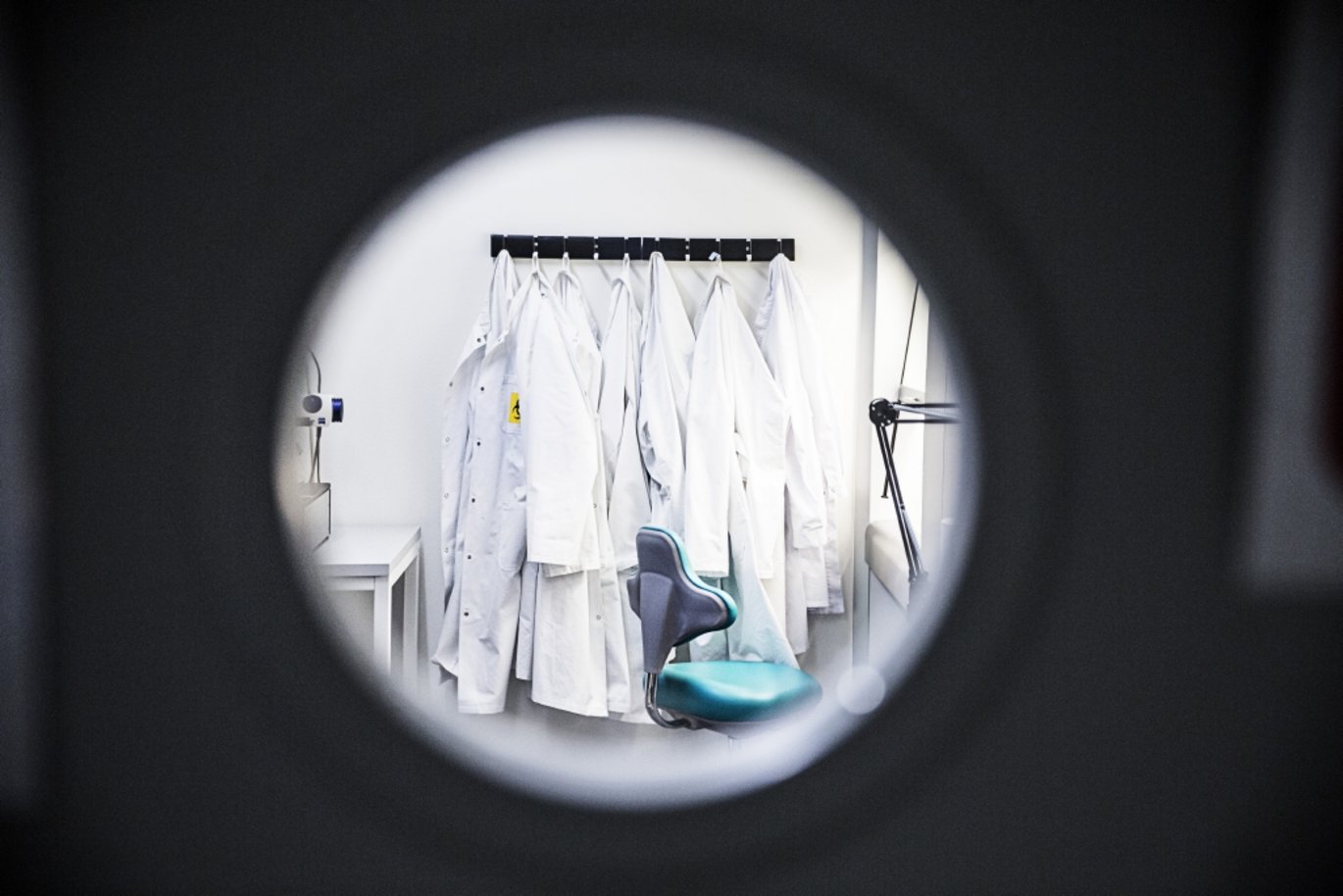400 researchers can return to their labs
400 Health, Nat and Tech researchers, including postdocs and PhD students, have been allowed to return to their test tubes at AU, along with technical support staff. AU’s labs are now also open to a few MSc thesis students as well as 5-10 researchers from Aarhus BSS.

The researchers who now have access to their labs again were informed directly on Wednesday April 22. The reopening also applies to a few MSc thesis students who can’t continue working on their projects without access to a lab. Department heads and thesis supervisors will agree on which students are to be given access.
A very slight opening
Rector Brian Bech Nielsen emphasises that the opening that has been agreed between Universities Denmark and the Ministry of Higher Education and Science is very slight. Negotiations to partially reopen the labs had been taking place since last week, when the government announced that a partial resumption of lab activities this week would be realistic if it were possible to agree on responsible guidelines applicable at all eight universities. And the final agreement on these guidelines fell into place last night.
“With this partial reopening, we have been given an opportunity to initiate a very few research activities above and beyond the emergency measures that have been in place since the shutdown of the university. Also in addition to the coronavirus research that’s already ongoing,” the rector explained.
READ MORE: Research labs can partially reopen
About 400 researchers who can put on their lab coats again; about 100 from each of the three faculties Health, Nat and Tech. In addition, 5-10 engineering researchers will be given access to their research facilities at Aarhus BSS in Herning.
“The scope of the research activities we can start working on now has been determined in dialogue with the Ministry of Higher Education and Science and Universities Denmark, as as I said, this is a very limited reopening that only applies to work in labs. What’s more, a condition for the reopening is that everyone who will be admitted to the labs is extremely conscientious about following the rules that have been agreed on. Because we’re going to have a strong focus on responsible behavior in relation to the spread of corona,” the rector said.
Other kinds of research are also hard hit
Bech Nielsen stresses that the senior management team is acutely conscious of the fact that there’s a lot of research that doesn’t take place in labs that is getting hit hard by the university shutdown. For example, researchers in a variety of fields are feeling a lot of pressure about deadlines, for example in relation to external grants or PhD projects.
“But right now, the situation we’re in is that the government has decided to prioritise research labs in this first phase of the gradual reopening. But we’ll get to a more general reopening at some point. And we at the universities have argued that it should be up to the individual universities to prioritise when we get there. Because this is how we’ll get the best solutions at the individual institutions.”
No business as usual on this side of the summer vacation
And now for the million dollar question: When does the rector think the university’s campuses will be buzzing with life and activity again? Does he think that this will happen around May 10?
“I’d like to stress that this is my guess, and it could just as well be your guess. I don’t have any insider knowledge, so this is purely a guess on my part. But as things look now, I don’t think we’ll be set loose after May 10. On the contrary, my guess it that we’ll see one additional step towards reopening after this one, followed by another, and so on and so on. I can certainly imagine that we won’t be 100% back to normal until after the summer vacation.”
FACTS
As a condition for the partial reopening of the labs, special rules for work in research labs were agreed between Universities Denmark and the Ministry of Higher Education and Science.
- At any given time, a maximum of 25 per cent of normal staffing may be present in each lab (for example, max. three people in a 12-person lab).
- Labs must be booked online to ensure coordination and registration of access.
- Everyone must wear gloves in all labs, regardless of classification.
- Staff may not work side-by-side, and staff must comply with the authorities’ recommended social distance of 1.5 -2 m.
- An agreement with the individual employee’s immediate supervisor must be made regarding how lab work is to be organised, with due consideration for the situation of the individual.
- Only one person at a time is allowed in rooms under 10 sqm.
- After completing work, employees must disinfect all contact surfaces, including light switches, handles, keyboards, equipment, etc.
- Reduced lab service.
- Touching other people in the lab is NOT permitted. Employees must perform their activities in isolation.
In addition, the partial reopening of the labs is conditional on compliance with these instructions from the Danish Health Authority:
- Maintain social distancing, practice good hand hygiene, and cough or sneeze into your sleeve.
- Do not come to work if you feel unwell or if you have coronavirus symptoms.
- If you develop symptoms of the disease, you must stay at home until you have been asymptomatic for at least two days. If you start getting symptoms at work, you must go home immediately.
- Avoid spending longer periods of time in the same room with people.
- Take breaks in separate rooms and maintain social distancing.
- Only one person in the elevator at a time.
- Access to break rooms and the like is prohibited.
Translated by Lenore Messick

